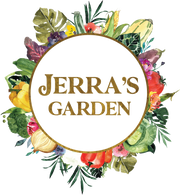If you've ever stepped outside into Florida's blazing sun and wondered, "Can anything really grow in this heat?" you're not alone. Gardening in Florida is a unique experience. It’s a land of both bounty and challenge — where tropical rains, year-round pests, and scorching summers test your patience, but also where you can grow what most of the country can only dream of.
So, is Florida a good place to garden? The answer is a resounding yes — once you learn to work with the climate instead of against it.
The Perks of Gardening in Florida
1. A Year-Round Growing Season

Unlike colder climates where winter means a hard stop to all planting, Florida gardeners can grow something nearly every month of the year. Even in the middle of winter, there’s plenty you can grow — from leafy greens and root crops to herbs and heat-loving tropicals.
2. Tropical and Exotic Options

Florida's climate opens the door to a whole world of crops you can’t easily grow elsewhere in the U.S. Think: ginger, turmeric, lemongrass, papayas, sweet potatoes, Seminole pumpkin, and more. If you’ve dreamed of growing tropical fruits and vibrant herbs, this is the place.
3. Early and Late Season Flexibility

Because Florida doesn't experience deep frosts in most zones, you can start your spring garden much earlier and extend your fall garden much later than gardeners up north. This flexibility means more harvests and more experimenting with varieties.
The Challenges to Know
Florida gardening is rewarding, but it isn’t effortless. Here are a few common hurdles you’ll want to be aware of:
1. Extreme Heat and Humidity

Summer in Florida isn’t just hot — it’s relentless. Some crops will bolt, wither, or become pest magnets if planted at the wrong time. Planning your planting schedule around Florida’s seasons (which are different from traditional U.S. growing calendars) is key.
2. Pest and Disease Pressure

Year-round warmth means year-round bugs. Whiteflies, caterpillars, aphids, nematodes — they don’t take winters off here. This makes integrated pest management (IPM) and variety selection incredibly important.
3. Poor or Sandy Soil

Much of Florida’s soil lacks nutrients or drains too quickly. But with regular amending, composting, and the use of raised beds or containers, you can absolutely build healthy, productive soil.
Why It’s Worth It
Once you embrace Florida gardening for what it is, not what you wish it would be, it becomes a deeply fulfilling practice. You’ll find joy in learning seasonal rhythms, discovering new tropical crops, and harvesting food year-round.
And when you get that first homegrown papaya, or see turmeric shoots pushing up through the soil, you’ll know it was all worth it.
Free Resource to Help You Start
New to Florida gardening or feeling a little lost in the heat of summer? Download a FREE Garden Tasks Checklist to get a month-by-month look at what to plant, prep, and plan right now in your Florida garden.

